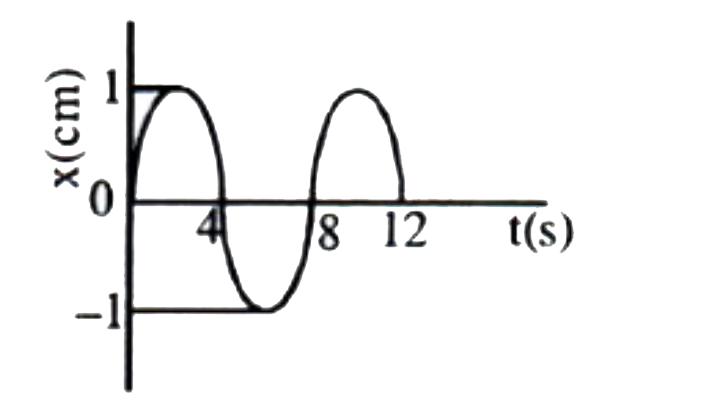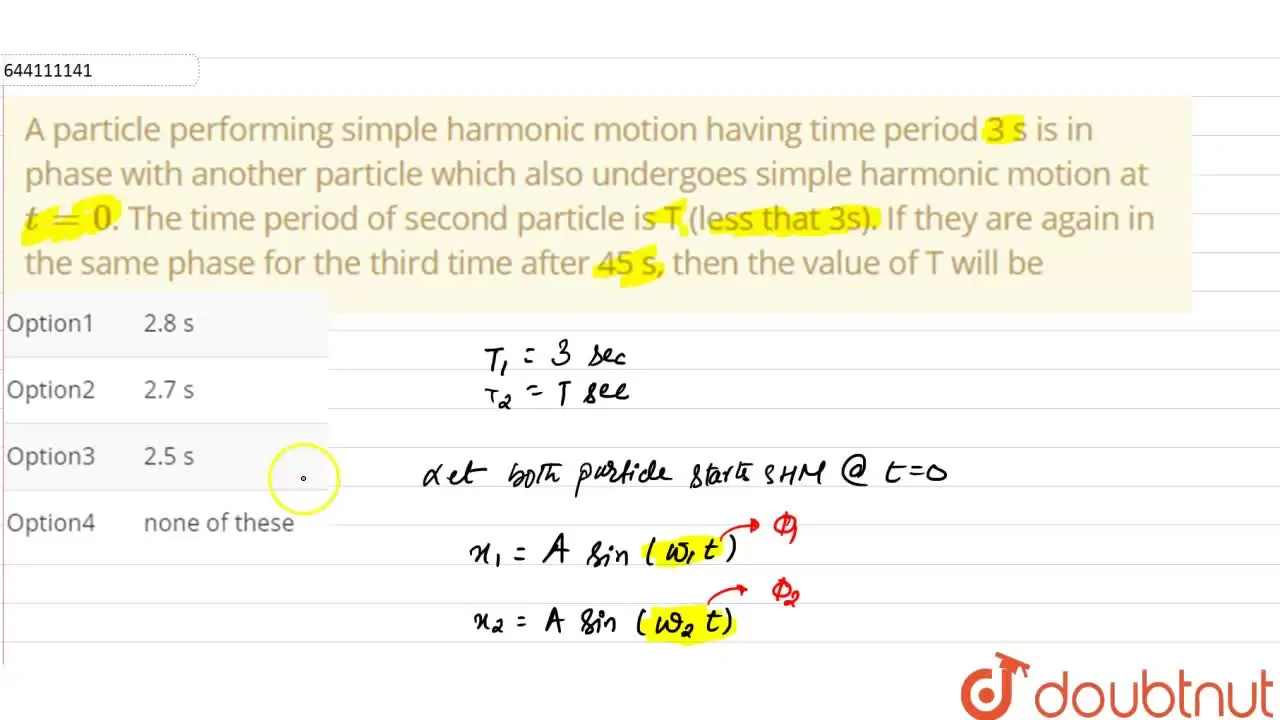A particle performing simple harmonic motion having time period 3 s is in phase with another particle which also undergoes simple harmonic motion at t=0. The time period of second particle is T (less that 3s). If they are again in the same phase for the third time after 45 s, then the value of T will be
2.8 s
2.7 s
2.5 s
none of these
The correct Answer is:C
Let ω1 and ω2 be the angular frequencis of first and second particle respectively then the phase by which they will proceed in time t is ω1t and ω2t, respectively.
According to the given situation.
ω2t−ω1t=3×2π for t=45s
2πT−2π3=3×2π45
1T=13+115=615⇒T=2.5s
Related Playlists
- BOOK - CENGAGE PHYSICS ENGLISHCHAPTER - LINEAR AND ANGULAR SIMPLE HARMONIC MOTIONEXERCISE - Multiple Correct35videos
LINEAR AND ANGULAR SIMPLE HARMONIC MOTION
- BOOK - CENGAGE PHYSICS ENGLISHCHAPTER - LINEAR AND ANGULAR SIMPLE HARMONIC MOTIONEXERCISE - Assertion Reasoning6videos
LINEAR AND ANGULAR SIMPLE HARMONIC MOTION
- BOOK - CENGAGE PHYSICS ENGLISHCHAPTER - LINEAR AND ANGULAR SIMPLE HARMONIC MOTIONEXERCISE - Subjective21videos
LINEAR AND ANGULAR SIMPLE HARMONIC MOTION
- BOOK - CENGAGE PHYSICS ENGLISHCHAPTER - KINETIC THEORY OF GASES AND FIRST LAW OF THERMODYNAMICSEXERCISE - Interger11videos
KINETIC THEORY OF GASES AND FIRST LAW OF THERMODYNAMICS
- BOOK - CENGAGE PHYSICS ENGLISHCHAPTER - MISCELLANEOUS KINEMATICSEXERCISE - Interger type3videos
MISCELLANEOUS KINEMATICS
Similar Questions
A particle executing simple harmonic motion with time period T. the time period with which its kinetic energy oscillates is
View SolutionIf particle is excuting simple harmonic motion with time period T, then the time period of its total mechanical energy is :-
View SolutionThe phase (at a time t) of a particle in simple harmonic motion tells
View SolutionA particle executing simple harmonic motion with an amplitude A. The distance travelled by the particle in one time period is
View SolutionThe displacement of a particle in simple harmonic motion in one time period is
View SolutionThe x-t graph of a particle undergoing simple harmonic motion is shown below. The acceleration of the particle at t=23s is
 View Solution
View SolutionThe x−t graph of a particle undergoing simple harmonic motion is shown below. The accelertion of the particle at t=4/3s is
 View Solution
View SolutionA particle executes a simple harmonic motion of time period T. Find the time taken by the particle to go directly from its mean position to half the amplitude.
View SolutionA particle is executing simple harmonic motion with an amplitude A and time period T. The displacement of the particles after 2T period from its initial position is
View SolutionThe distance moved by a particle in simple harmonic motion in one time period is
View Solution


